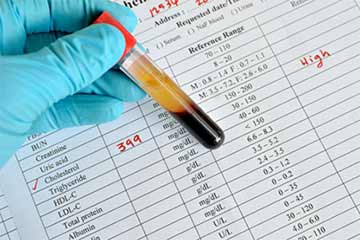Potential Uses of Human Stem Cells
What are the potential uses of human stem cells?
There are many ways in which human stem cells can be used in research and the clinic.
Studies of human embryonic stem cells will yield information about the complex events that occur during human development.
A primary goal of this work is to identify how undifferentiated stem cells become the differentiated cells that form the tissues and organs.
Scientists know that turning genes on and off is central to this process.
Some of the most serious medical conditions, such as cancer and birth defects, are due to abnormal cell division and differentiation.
A more complete understanding of the genetic and molecular controls of these processes may yield information about how such diseases arise and suggest new strategies for therapy.
Predictably controlling cell proliferation and differentiation requires additional basic research on the molecular and genetic signals that regulate cell division and specialization.
While recent developments with iPS cells suggest some of the specific factors that may be involved, techniques must be devised to introduce these factors safely into the cells and control the processes that are induced by these factors.
Human stem cells could also be used to test new drugs. For example, new medications could be tested for safety on differentiated cells generated from human pluripotent cell lines. Other kinds of cell lines are already used in this way.
Cancer cell lines, for example, are used to screen potential anti-tumor drugs. The availability of pluripotent stem cells would allow drug testing in a wider range of cell types. However, to screen drugs effectively, the conditions must be identical when comparing different drugs.
Therefore, scientists will have to be able to precisely control the differentiation of stem cells into the specific cell type on which drugs will be tested. Current knowledge of the signals controlling differentiation falls short of being able to mimic these conditions precisely to generate pure populations of differentiated cells for each drug being tested.
Perhaps the most important potential application of human stem cells is the generation of cells and tissues that could be used for cell-based therapies. Today, donated organs and tissues are often used to replace ailing or destroyed tissue, but the need for transplantable tissues and organs far outweighs the available supply.
Stem cells, directed to differentiate into specific cell types, offer the possibility of a renewable source of replacement cells and tissues to treat diseases including Alzheimer's diseases, spinal cord injury, stroke, burns, heart disease, diabetes, osteoarthritis, and rheumatoid arthritis.
For example, it may become possible to generate healthy heart muscle cells in the laboratory and then transplant those cells into patients with chronic heart disease.
Preliminary research in mice and other animals indicates that bone marrow stromal cells, transplanted into a damaged heart, can have beneficial effects.
Whether these cells can generate heart muscle cells or stimulate the growth of new blood vessels that repopulate the heart tissue, or help via some other mechanism is actively under investigation. For example, injected cells may accomplish repair by secreting growth factors, rather than actually incorporating into the heart.
Promising results from animal studies have served as the basis for a small number of exploratory studies in humans. Other recent studies in cell culturesystems indicate that it may be possible to direct the differentiation of embryonic stem cells or adult bone marrow cells into heart muscle cells.
Can Stem Cells Mend a Broken Heart?: Stem Cells for the Future Treatment of Heart Disease
Cardiovascular disease (CVD), which includes hypertension, coronary heart disease, stroke, and congestive heart failure, has ranked as the number one cause of death in the United States every year since 1900 except 1918, when the nation struggled with an influenza epidemic. Nearly 2600 Americans die of CVD each day, roughly one person every 34 seconds. Given the aging of the population and the relatively dramatic recent increases in the prevalence of cardiovascular risk factors such as obesity and type 2 diabetes, CVD will be a significant health concern well into the 21st century.
Cardiovascular disease can deprive heart tissue of oxygen, thereby killing cardiac muscle cells (cardiomyocytes). This loss triggers a cascade of detrimental events, including formation of scar tissue, an overload of blood flow and pressure capacity, the overstretching of viable cardiac cells attempting to sustain cardiac output, leading to heart failure, and eventual death. Restoring damaged heart muscle tissue, through repair or regeneration, is therefore a potentially new strategy to treat heart failure.
The use of embryonic and adult-derived stem cells for cardiac repair is an active area of research. A number of stem cell types, including embryonic stem (ES) cells, cardiac stem cells that naturally reside within the heart, myoblasts (muscle stem cells), adult bone marrow-derived cells including mesenchymal cells (bone marrow-derived cells that give rise to tissues such as muscle, bone, tendons, ligaments, and adipose tissue), endothelial progenitor cells (cells that give rise to the endothelium, the interior lining of blood vessels), and umbilical cord blood cells, have been investigated as possible sources for regenerating damaged heart tissue. All have been explored in mouse or rat models, and some have been tested in larger animal models, such as pigs.
A few small studies have also been carried out in humans, usually in patients who are undergoing open-heart surgery. Several of these have demonstrated that stem cells that are injected into the circulation or directly into the injured heart tissue appear to improve cardiac function and/or induce the formation of new capillaries. The mechanism for this repair remains controversial, and the stem cells likely regenerate heart tissue through several pathways. However, the stem cell populations that have been tested in these experiments vary widely, as do the conditions of their purification and application. Although much more research is needed to assess the safety and improve the efficacy of this approach, these preliminary clinical experiments show how stem cells may one day be used to repair damaged heart tissue, thereby reducing the burden of cardiovascular disease.
In people who suffer from type 1 diabetes, the cells of the pancreas that normally produce insulin are destroyed by the patient's own immune system. New studies indicate that it may be possible to direct the differentiation of human embryonic stem cells in cell culture to form insulin-producing cells that eventually could be used in transplantation therapy for persons with diabetes.
To realize the promise of novel cell-based therapies for such pervasive and debilitating diseases, scientists must be able to manipulate stem cells so that they possess the necessary characteristics for successful differentiation, transplantation, and engraftment. The following is a list of steps in successful cell-based treatments that scientists will have to learn to control to bring such treatments to the clinic. To be useful for transplant purposes, stem cells must be reproducibly made to:
-
Proliferate extensively and generate sufficient quantities of tissue.
-
Differentiate into the desired cell type(s).
-
Survive in the recipient after transplant.
-
Integrate into the surrounding tissue after transplant.
-
Function appropriately for the duration of the recipient's life.
-
Avoid harming the recipient in any way.
Also, to avoid the problem of immune rejection, scientists are experimenting with different research strategies to generate tissues that will not be rejected.
To summarize, stem cells offer exciting promise for future therapies, but significant technical hurdles remain that will only be overcome through years of intensive research.
Source
The National Institutes of Health
Resource for Stem Cell Research
Related Articles:
-
Why are Stem Cells Important?
-
Stem Cell Basics
-
Embryonic Stem Cells
-
Adult Stem Cell
-
Induced Pluripotent Stem Cells
-
Potential Uses of Human Stem Cells
-
Benefits of Stem Cells
-
Cancer and Stem Cells
-
Stem Cells for Leukaemia
-
Stem Cells and HIV






